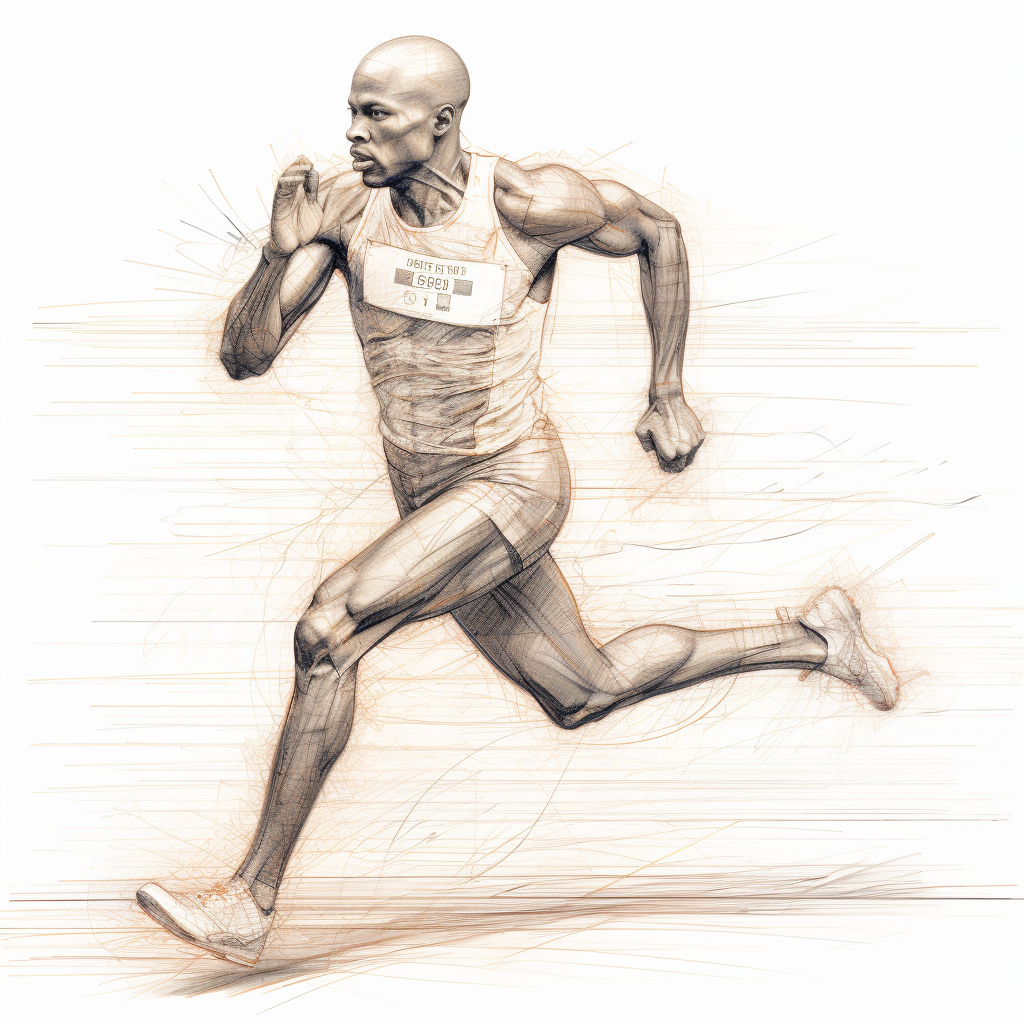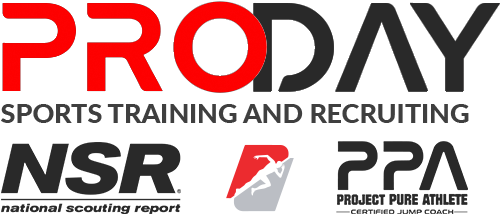
Learn How to Improve your Speed Today: Schedule a $39 Speed Test ($99 value)
Speed = The rate of change of an object’s position with respect to time.
Acceleration = change in velocity. This could be big or small, but acceleration is how the object (the athlete) reaches top speed. Acceleration is not a certain distance. It’s everything leading up to top speed. So, if an athlete has high acceleration, it means they had a big rate of change in speed or velocity. For example, athletes typically get to 40-60% of top speed in the first 2-4 steps of a sprint. Therefore, the athlete has a high acceleration rate at the beginning of the sprint. Later in a sprint, the athlete might go from 18 to 20 mph. They are still accelerating 20-30 yards into the sprint, but not at as high of a rate.

How to improve Acceleration or change in velocity?
- Physical Buckets that need to be filled:
- Produce high amounts of force in relation to body weight
- The athlete needs to be powerful and reactive > need to apply that force fast.
Technical Buckets that need to be filled:
- Projection – how an athlete projects their torso and their hips.
- Switching – after projection, the athlete needs to be able to switch their legs quickly to create a high impact into the ground.
3. Rise – athlete’s torso and shin angle should rise incrementally as they reach peak velocity.
How to improve Max Velocity or the peak speed an athlete’s run
- Physical Buckets
- High Impulse – create high forces in a very short amount of time.
- Reactive – ability to apply the force produced quickly
- Elastic – use tendons and ligaments to use a rubber band-type reflex when contacting the ground. Elasticity is developed through plyos, jumping, very fast lifting and velocity-based training.
- Technical Buckets
- Front side – should see a 75-80 degree angle from thigh to ground.
- Whip from the Hip – whip the leg from the highest point on frontside down into the ground as fast as possible
- Arm Range – bigger range of motion in the shoulders
Myth #1: “You can’t teach speed”
Fact: We’ve seen an average increase of more than 1 mile per hour working recently with several professional programs, college programs, high schools, and even middle schools. You can teach speed. Speed can be taught at Speed Coach Tulsa, but it has to be specific to see a gradual increase in max velocity. If an athlete runs with intention at max velocity as frequent as they can at least once a week with proper rest periods, they will get faster.
Myth #2: “I don’t have enough time to train speed”
Our data shows, you can actually improve speed with consistent micro-doses of speed exposure in 15-30 minute periods. 1. Run at or close to top speed . As long as your athletes are building up to a top speed or close to a top speed, they’re getting the effect from the physical component that will help develop speed. There are other things to focus on as well like developing more force to the ground and developing more of a technical model. But if you continuously tap into that physical bucket, you can improve your Speed Coach Tulsa. 2. Work on reactive qualities by adding in some jumps, plyos, etc. to improve reactivity. 3. Put technical components into your warm-up
Myth #3: “It’s too risky to train”
We’ve actually found at Speed Coach Tulsa that not training speed is a higher risk. If you’re not telling your system to reach those max capacities, when they are called on in a game or high-intensity situation, the body won’t know what to do with them. This is when athletes tend to get soft tissue injuries since the contraction rate isn’t there. A better method… If you’re having your athletes hit maximal capacities within the training program frequently enough, there won’t be a big spike in intensity when the athlete is faced with those situations in a game or scrimmage. Example here at Speed Coach Tulsa If determined an athlete is exposed to 20 mph in a game but has only been exposed to 16 mph in training, that gap is a spike in intensity which could cause a poor performance after the fact (the nervous system can’t recover in time) or some sort of injury. When training, we like to give athletes high exposure to reduce these spikes in intensity when faced with them in high-pressure situations.
Myth #4: “You can’t change sprinting technique”
You actually can change someone’s technique, it might not change something they do with arms, rotations of the leg, etc but you can make changes. What changes can be made? We know at Speed Coach Tulsa these changes can be made. Frontside Range of Motion – key component we talked about when getting to max velocity Total Range of Motion – from 90 degrees to 105 degrees, adds to a better stride length. Switching Improvements – thigh angular velocity which measures how much range of motion an athlete got and how quickly they closed that range of motion Torso Improvements – an athlete with too much forward lean can be improved to a more moderate lean.
Myth #5: “This is how we’ve always taught speed”
Tradition has gotten in the way of good speed training. Athletes have been brainwashed into thinking “this is how sports were meant to be” and thus speed training is supposed to be the same. Athletes have been conditioned that sports in America are miserable at practice and enjoyable in the game or competition. Somehow, we’re to believe that all this misery will transfer to high performance.
- Miserable training creates a joyful performance
- Daily fatigue results in fourth-quarter freshness
- By inflicting pain, coaches create strong, healthy athletes
- Hating practice will result in loving the game
Non-Negotiables with our speed training at Speed Coach Tulsa
- Never let training interfere with the sport
- Never let the weight room interfere with speed. Do your speed work before the weight room, not the other way around.
